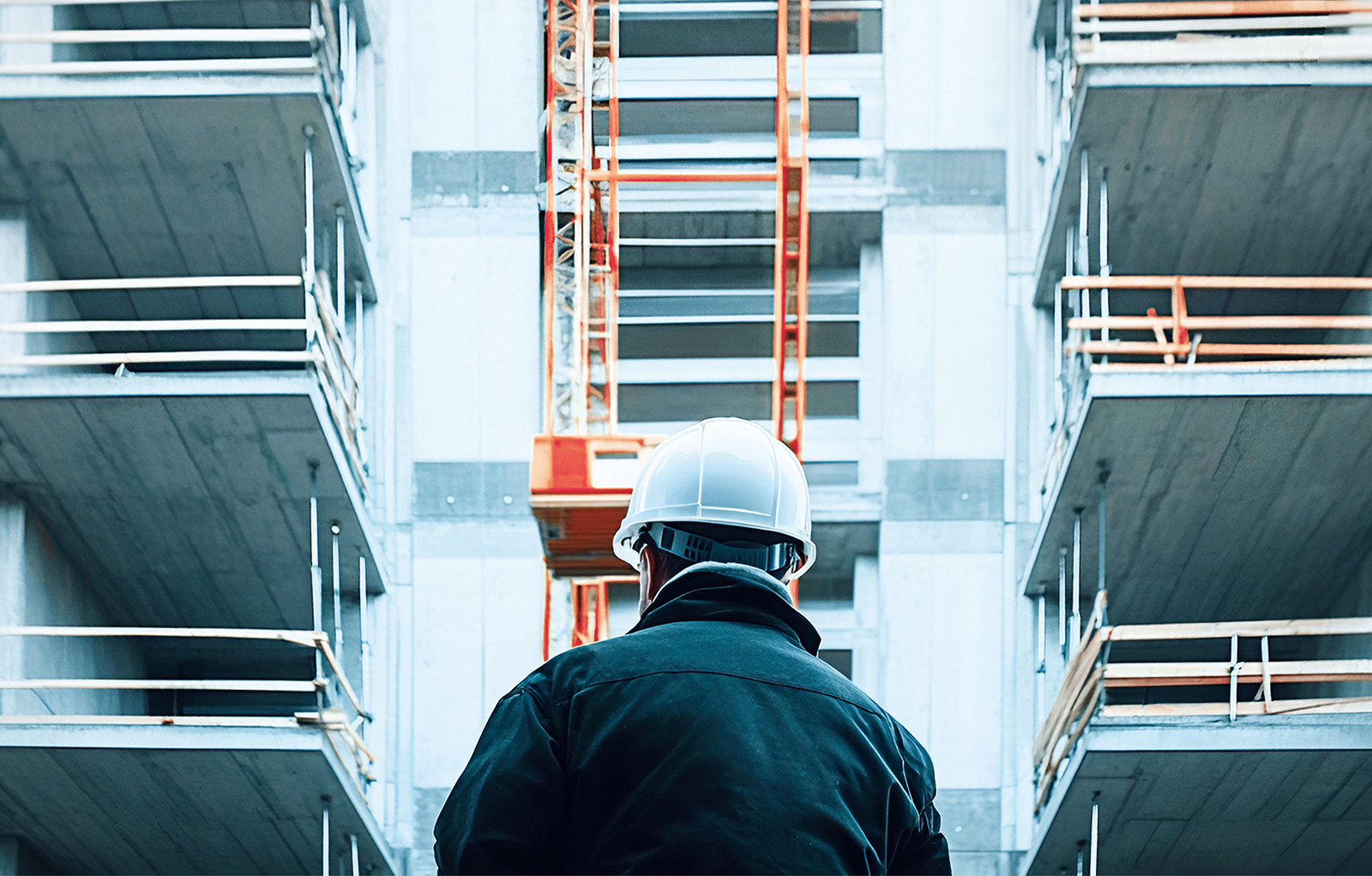
Construction lawyers from Osborne Clarke review in this CPD the new building safety legal framework and what developments the industry should expect in the future.
What you will learn in this CPD
- The reforms introduced by the Building Safety Act
- How the industry has responded to the new legislation
- Changes expected following the government’s response to the Grenfell inquir
Monday 28 April 2025 marked the third anniversary of the Building Safety Act 2022 (BSA) passing into law. The BSA seeks to bring about a wholescale cultural shift in the construction industry by implementing new obligations, liabilities and procedures for those designing, constructing and managing buildings.
For the last three years, the industry has been working hard to understand what is required of it in a new ‘building safety first’ era. This remains a dynamic area with new regulations, reforms and guidance frequently announced by the government.
The BSA, and the regulations that flowed from it, introduced a new regime predominantly in England aimed at making building safety a priority in the industry. The changes introduced by the BSA are as follows:
The higher-risk building and gateway regimes
Among the main changes introduced by the BSA, the higher-risk building (HRB) regime broadly applies at present to buildings that have at least seven storeys or are
at least 18 metres high and contain two or more residential units.
The BSA introduced a new three-stage gateway regulatory regime for HRBs, acting as a series of checkpoints throughout the planning, pre-construction and
post-construction phases of HRB work (also relevant to work to existing HRBs).
At each gateway, certain requirements must be met to ensure that safety remains a top priority. Failure to meet those requirements, particularly at the design and construction phase, can have drastic programme and cost implications.
The BSA created the power to prescribe competency requirements for ‘dutyholders’. These include the principal designer, designers, principal contractor and contractors, with clients needing to verify the competency of those carrying out design and building work.
Introduced by secondary regulations in 2023, this competency regime applies to both individuals and organisations, thereby placing a key requirement on dutyholders to ensure (and evidence that) they possess the necessary skills, knowledge, experience and behaviours for the design or building work they undertake. It also introduced new procedures and registration requirements for building control professionals.
A new Building Safety Regulator
The Health and Safety Executive was established as the Building Safety Regulator (BSR), responsible for enforcing the new regulatory framework, ensuring compliance with safety standards and managing the HRB gateways process.
Information management requirements
There is a legal duty on dutyholders and accountable persons to keep and maintain a ‘golden thread’ of information for HRBs. This is a digital record that is created, collated and maintained throughout the HRB’s lifecycle as a ‘single source of truth’ of an HRB. Information forming the golden thread is integral to submissions during the gateway regime.
This will be imposed on developers seeking permission to develop certain residential buildings in England, although this will not now come into force until autumn 2026.
Although the Building Safety Levy has been delayed, the levy rates have been confirmed by the government. The levy’s details and implications have been the subject of much speculation among developers.
There is a range of new remedies to pursue redress for building safety defects. The introduction of remediation orders, remediation contribution orders and building liability orders under the BSA opened up the pool of remedies to pursue a party for the rectification of relevant building safety defects.
The High Court and First-tier Tribunal have already seen and will continue to see a flurry of applications for these orders.
The government confirmed that it will adopt 49 of the 58 recommendations made by the inquiry in full and accept the remaining nine in principle.
The following recommendations are the most significant changes to the BSA regime:
A review of the definition of an HRB
Plans for the ongoing review of the definition of an HRB will be outlined in summer 2025.
The government’s remediation acceleration plan, introduced at the end of 2024, has already noted the proposal to legislate to require those responsible for buildings 11 metres and over to remediate their buildings.
Equally, buildings covered by the developer remediation contract entered between the government and 54 larger developers are those that are 11 metres-plus.
We should therefore expect to see a more expansive definition of HRB to be adopted. In doing so, the industry will, no doubt, be eagerly awaiting reforms to increase the capacity of the BSR.
Mandatory accreditation and greater regulation of building safety professionals
Fire engineers, building control professionals and principal designers will each be subject to tighter regulation or certification requirements that are all designed to improve the competence of key individuals working in the industry.
The government will also consider whether to implement a licensing scheme for principal contractors working on HRBs, though the details of what such a scheme might involve remain scant.
As with several other changes introduced by the BSA, this is likely to be controversial among contractors who face ongoing uncertainty as to what will be required of them.
Review of current statutory guidance
Bringing fire safety under the remit of a single secretary of state
The government will move fire safety-related functions from the Home Office to the Ministry of Housing, Communities and Local Government. This will simplify the supervisory landscape and develop expertise in fire safety in government, in contrast with the current, fragmented arrangements.
Creation of a single construction regulator
This new regulator will deliver most of the functions recommended in the report (which are detailed in a full list in the Grenfell Tower Inquiry Phase 2 Report). These include regulation, oversight and accreditation and encompass the regulation of construction products, licensing of contractors working on HRBs, accreditation of some professionals and monitoring of building regulations.
This ‘one-stop shop’ for construction regulation will be a welcome simplification of the compliance regime, although details of exactly how this regulator will be run and who will fund it remain to be disclosed.
The industry has made remarkable strides in response to the reforms introduced by the BSA. Enhanced safety protocols have been widely implemented, extensive HRB remediation works are either completed or actively under way, and the new duties have been embraced across the sector.

Over the past three years, there has been significant innovation in ‘golden thread’ technologies, ensuring comprehensive digital records of building safety information. Collaboration within the sector and with the government has led to invaluable initiatives such as the Industry Safety Steering Group, the Competence Steering Group, and the Building a Safer Future Charter, showcasing the industry’s commitment to building safety.
While challenges have arisen, the industry has shown resilience and adaptability. An ongoing challenge will be the often significant delays in the HRB gateways regime.
Andrew Moore, head of operations, planning and building control at the BSR, has noted that the average decision time since October 2024 has been 22 weeks, significantly longer than the mandated eight weeks for existing HRB work schemes and 12 weeks for new HRBs. The industry will be familiar with this issue as well as the impact on time and cost that this is having on the delivery of HRB projects.
Looking ahead, the government’s response to the Grenfell Tower Inquiry’s Phase 2 Report signals that further building safety reforms are on the horizon.
The review of the definition of HRBs, mandatory accreditation and greater regulation of building safety professionals, and the creation of a single construction regulator seek to enhance and simplify the building safety framework.
The government’s core goal via the BSA and continued reform is to encourage a ‘race to the top’ in building safety to ensure the safety of every resident. There are good grounds for optimism that the industry is well positioned to adapt to these evolving requirements, demonstrating a continued commitment to safety and compliance. l
HRB projects: where to start?

Parties should consider seeking legal or specialist advice early. Discussing the best contractual structure for the higher-risk building (HRB) project in question is crucial.
Considerations surrounding risk apportionment and ensuring the inclusion of adequate contractual provisions for the new HRB regime are also generally important. These considerations should be included in and passed down through the contract suite.
Particularly for the gateway process, adequate mechanisms need to be included in contracts to clarify each party’s role and what the impact of delay is for the specific project. Leaning into the extension of time mechanisms, where appropriate and in context, will assist.
Parties should ensure the appointed construction team, in compliance with their dutyholder roles, understand how the BSA applies to the proposed HRB works going into the process.
At present, it is understood that the BSR will not show applicants how to meet the building regulation requirements nor provide pre-application advice.
Careful planning of the appointed construction team for the complexity of each HRB project and leaning into existing guidance on the process will assist in building
this understanding.
The authors of this CPD are Helen Waddell and Rupa Lakha, partners, Kayla Urbanski, associate, and Maxim Clarke, trainee solicitor, of Osborne Clarke’s construction disputes team, together with Alexandra Gower, partner, and Sarah Steed, senior knowledge lawyer, in the firm’s construction team.
View the original article and our Inspiration here


Leave a Reply